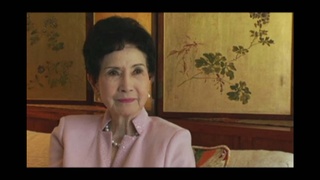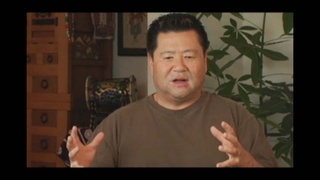Interviews
American influences on Japanese taiko
We’ve known KODO from the very beginning, since they were Ondekoza. When Ondekoza first came here, they didn’t know anybody and they somehow found us and so they practiced here. So it was really weird. They had a hotel – a cheap hotel – in Hollywood and of course they ran here, rehearsed, ran back, and then ran to the theatre for a performance. We’re going, “What’s the matter with you people?”
But anyway, since that time, we’ve been very, very close. And when they became KODO. So usually, when KODO comes to town, we have a potluck with them. They’re the exact opposite of us. I remember one time they said, “Our taiko is serious taiko and your taiko is fun taiko”. We took that as a compliment and I think as a result of American contact, maybe with us, I don’t know, they finally agreed to have a woman perform in their troupe, which is unheard of in Japan. Women do not play taiko. Here, it’s overwhelmingly women. The majority of any group is women because that onus is not there and I think that had an influence, an impact on them.
And the fact that they can finally smile in a piece while they’re playing, which you don’t do in Japanese performing arts. So that’s been an American influence, I think. And I think they’re much better off for it.
Date: December 3, 2004
Location: California, US
Interviewer: Art Hansen, Sojin Kim
Contributed by: Watase Media Arts Center, Japanese American National Museum
Explore More Videos

Introducing Taiko in Vancouver
(b.1951) Co-founder and managing director of San Jose Taiko.

The philosophy of playing Taiko
(b.1951) Co-founder and managing director of San Jose Taiko.

Defining a Taiko player
(b.1951) Co-founder and managing director of San Jose Taiko.

Dancing in Japan as an American, in the US as Japanese
(1918-2023) Nisei Japanese kabuki dancer

Different learning style in Japan and the United States
(1918-2023) Nisei Japanese kabuki dancer

Both Japanese and American identities though Japanese dance
(1918-2023) Nisei Japanese kabuki dancer


Hardship to be a Kabuki dancer as a woman
(1918-2023) Nisei Japanese kabuki dancer

Do my best as a professional dancer
(1918-2023) Nisei Japanese kabuki dancer

Gender discrimination in education field
(1925 - 2018) Nisei educator from Hawai‘i

Decision between becoming a minister or musician
(b. 1949) Musician and arts educator and adminstrator.

Starting Japanese American taiko their own way
(b. 1949) Musician and arts educator and adminstrator.

Japanese American taiko is not Japanese taiko
(b. 1949) Musician and arts educator and adminstrator.


Parents didn't accept me playing taiko in the beginning
(b. 1949) Musician and arts educator and adminstrator.
